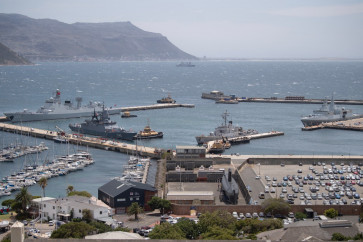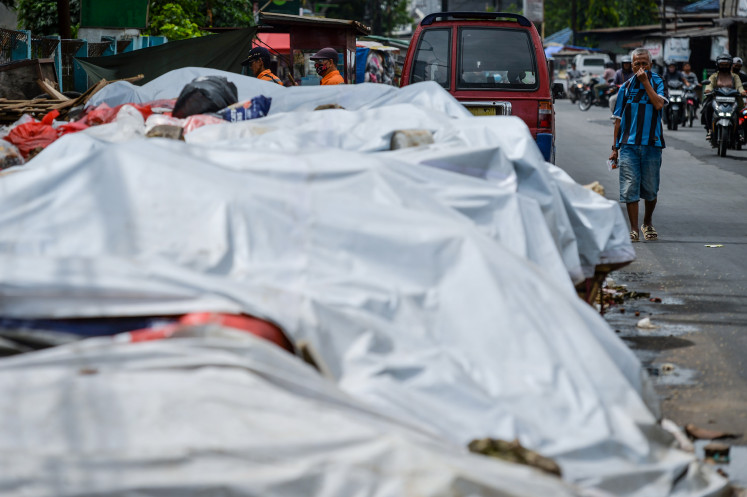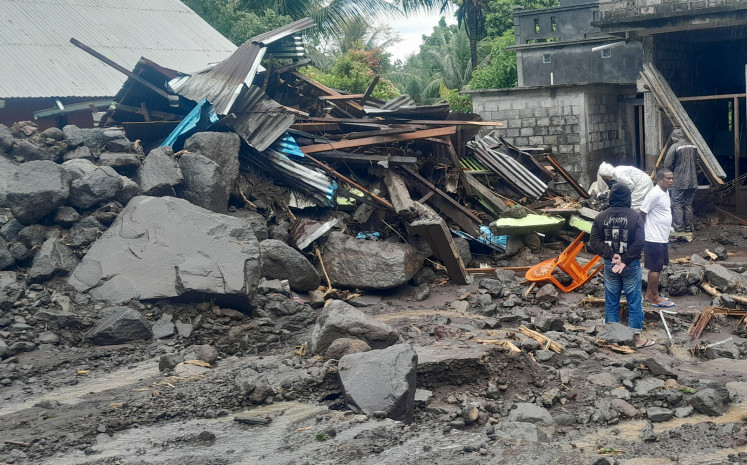Popular Reads
Top Results
Can't find what you're looking for?
View all search resultsPopular Reads
Top Results
Can't find what you're looking for?
View all search resultsA regional economic perspective of ASEAN through 2015 and beyond
The ASEAN Economic Community (AEC) 2015 Blueprint envisages four pillars: a single market and production base, a highly competitive economic region, a region of equitable economic development and a region fully integrated into the global economy
Change text size
Gift Premium Articles
to Anyone
T
he ASEAN Economic Community (AEC) 2015 Blueprint envisages four pillars: a single market and production base, a highly competitive economic region, a region of equitable economic development and a region fully integrated into the global economy.
While the blueprint is visionary and ambitious, much of the work will need to continue beyond 2015.
For the first pillar, ASEAN has achieved significant progress in removing tariffs under the ASEAN Trade in Goods Agreement, however non-tariff barriers (NTBs) continue to bottleneck intra-ASEAN trade.
The Asia-Pacific Trade and Investment Report 2011 showed that at least 90 percent of trade costs came from NTBs. Moreover, NTBs cost up to 10 percent of total trade as reported in Kompas on Aug. 15, 2011. Efforts to fully eliminate NTBs are mapped into several elements.
First is trade facilitation to help reduce transaction costs and enhance domestic competitiveness. Second are custom integration and the ASEAN Single Window to help smooth customs clearances and releases.
According to the AEC Scorecard 2008-2009, ASEAN-6 countries are at various stages of operating their respective National Single Window (NSW), while Cambodia, Laos, Myanmar and Vietnam (CLMV) have until 2012 to set up their respective NSW.
Third is streamlining standards and technical barriers to trade including systems of standards, quality assurance, accreditation and measurement.
Through the High-level Task Force on Regulatory Reform, whose first meeting was held in Jakarta on Aug. 3, 2011, the Annual Regulatory Reform Dialogue should be institutionalized and activities under the ASEAN Regulatory Reform Work Program should be conducted.
Financial integration has been minimal, as seen in the following facts. While intra-ASEAN trade was about 25 percent as of 2009, intra-ASEAN portfolio investment is only about 8 percent.
No ASEAN countries’ bond markets, especially for corporate bonds, have sufficient size to accommodate large international investors, which may impede infrastructure development.
Annual average gross total financial transaction from 2005–2009 among ASEAN is 20.58 percent of GDP while gross trade is 143.56 percent.
The cross-border activity of Asia-based banks (ASEAN+3 and India) within the region is limited. In 2008, the ASEAN+3 established the Asian Bond Market Initiatives and the Asian Bond Fund to support the national efforts to further develop local bond markets and to promote cross-border investment.
Under the second pillar, development of infrastructure remains the main bottleneck of domestic competitiveness in some major ASEAN economies.
In regards to the ASEAN Master Plan on regional connectivity, an infrastructure development fund has been created with the participation of other ASEAN+3 and East Asia Summit member countries. ASEAN finance ministers approved the establishment of the ASEAN Infrastructure Fund in Washington, DC, on Sept. 27, 2011, to help finance the master plan.
Under the third pillar, SME (small- and medium-sized enterprises, including micro-enterprises) development is one of the main priorities.
Generally, among ASEAN countries, SME accounts for more than 96 percent of all enterprises, 50-85 percent of domestic employment, 30-53 percent of GDP and 19-31 percent of exports.
Challenges in human development still plague most ASEAN countries, and equitable development within ASEAN and with the rest of the world remains a big challenge.
Using the World Bank’s criteria for income groups, Singapore and Brunei Darussalam are high-income countries; Malaysia and Thailand are upper middle-income countries; Indonesia, the Philippines and Vietnam are lower middle-income countries; and Cambodia, Laos and Myanmar are low-income countries.
Education, being one of the most important factors in development, has room for improvement in most ASEAN countries.
CLMV and Indonesia, still have mean years of schooling below six years (among people aged 25 years old and above) in 2010.
Life expectancy also varies from just above 60 in Cambodia and Myanmar to more than 80 years old in other ASEAN countries.
Looking at the poverty statistics, although Malaysia and Thailand are upper middle-income countries, Malaysia’s population living below US$2 a day was only 2.3 percent in 2009 while in Thailand it was 26.5 percent in 2009. Indicators on quality of life and how connected ASEAN people are also shows a divided ASEAN.
In the fourth pillar ASEAN has ongoing Free Trade Agreements with six of its dialogue partners: China, Japan, Republic of Korea, India, Australia and New Zealand.
In 1993, 2003 and 2008, intra-ASEAN trade grew from 19.2 percent to 25.1 percent to 26.8 percent, respectively.
Last year, this was equivalent to 25 percent of the total trade. Australian-New Zealand’s share of ASEAN trade has been increasing — albeit incrementally and below potential — from 2.4 percent in 1993 to 3.2 percent in 2009 — while other developed countries’ shares including those of the US and EU have been declining.
China’s share, meanwhile, has increased from 2.1 percent in 1993 to 11.6 percent in 2009.
Intra-Asian trade should be maintained due to declining external demand.
There are also other challenges that are not explicitly stated in the blueprint, including the middle-income trap phenomenon.
Since 2000, the major source of growth in ASEAN-4 (Malaysia, Indonesia, Thailand, the Philippines), unlike China, is consumption and not investment.
Investment in ASEAN-4 is less than that of the newly industrialized economies during their high-growth phases.
This highlights the importance of improving the investment climate and building better soft infrastructure including institutions, education and innovation.
The writer is a researcher at the Centre for Strategic and International Studies in Jakarta and a lecturer at the University of Indonesia’s School of Economics. This article was adapted from her background paper on “ASEAN 2030”, an Asian Development Bank Institute project.
_________________________________________
Correction
The Jakarta Post,
Column three, paragraph six of Maria Monica Wihardja's article "A
regional economic perspective of ASEAN", which appeared in the Nov. 18,
2011 edition of The Jakarta Post, should read: "CLMV and Indonesia still
have mean years of schooling below six years (among people aged 25
years old and above) in 2010."
The writer apologizes for the error.
-- Editor










